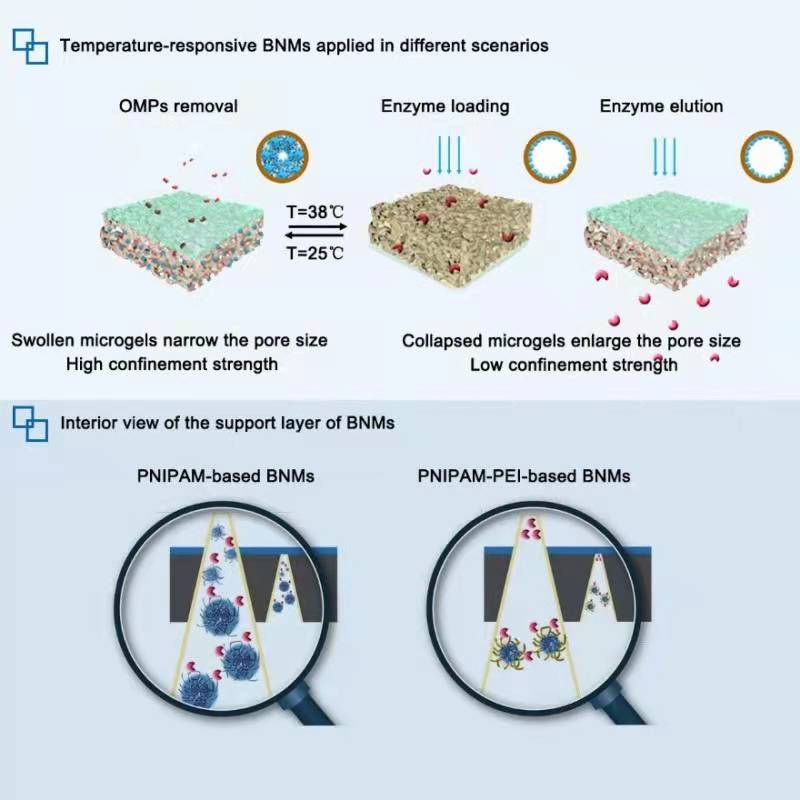A research group led by Prof. WAN Yinhua from the Institute of Process Engineering (IPE) of the Chinese Academy of Sciences developed a regenerable temperature-responsive biocatalytic nanofiltration membrane for organic micropollutants removal.
The study was published in iScience on Dec. 21 (DOI: 10.1016/j.isci.2021.103671).
Biocatalytic nanofiltration membranes (BNMs) capable of both enzyme catalysis and membrane separation are promising in efficient organic micropollutants (OMPs) removal. Unfortunately, the difficulties in the regeneration of the BNMs halted their sustainable application.
Inspired by cell membranes with stimuli-responsive channels, the researchers have developed the temperature-responsive BNMs with nanogating function by leveraging poly(N-isopropyl acrylamide) (PNIPAM) modification.
PNIPAM has a pronounced thermal response near-physiological temperature (32℃), mature synthesis process, good biocompatibility and high monodispersity. Benefiting from these features, PNIPAM microgels were employed and introduced into the support layer of the nanofiltration (NF) membrane by in-situ and co-deposition methods, respectively.
"The incorporation of PNIPAM microgels increases the geometric confinement of the support layer to enzymes at 25℃, thus improving enzyme loading, inhibiting enzyme leakage, and preventing membrane permeability decline caused by enzyme excess migration and aggregation," said Prof. WAN.
Additionally, by optimizing the concentration of reaction monomers, modification time and strategies, the PNIPAM-based BNMs showed high bisphenol A (BPA) removal efficiency and long-term stability.
Specifically, the PNIPAM-polyethyleneimine (PEI)-based BNMs can be easily regenerated through the elution-washing-reloading process at 38 °C, and the laccase activity and BPA removal efficiency were fully recovered.
This work provides a new BNMs preparation strategy for bioconversion, drug delivery, and biosensors.

Media Contact:
LI Xiangyu
Public Information Officer
Institute of Process Engineering, Chinese Academy of Sciences, Beijing 100190, P. R. China.
E-mail: xiangyuli@ipe.ac.cn
Tel: 86-10-82544826
 Search
Search




 京公网安备110402500047号
京公网安备110402500047号